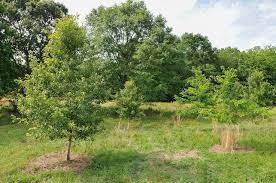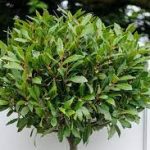PLANTING OAKS
Oaks have a reputation for being difficult to transplant successfully. This is particularly the case if you’re searching for instant satisfaction and want to plant an oak that’s too big or an oak in a pot that isn’t old enough. Oaks have massive root systems that snowball when they are young. That’s why they are so effective in protecting our watersheds and topsoil. When you transplant an oak already several feet high, you must root-prune it to the point of death. If it can survive the transplant and continues to grow, it’ll be tiny for the following years in the process of forming new roots.

It’s hard to believe, but oaks established as acorns or as young saplings grow can pass 15-foot-tall transplants in only several years. Also, large oaks transplanted can be costly, often hundreds of dollars for an oak, with a 50 % chance of dying within the first year.
Potted oaks face similar issues. The roots of oaks grow so fast that potted oaks may become root bound in just a few years. A potted oak five feet tall could be root-bound and have an increased chance of choking it to death when placed in the ground. Trees that are removed from their roots after being transferred onto larger container sizes have a better chance of surviving but aren’t as strong as a plant that is directly from an Acorn.

Oaks are also known as slow-growing. I’ve heard landscaping professionals advise clients to refrain from planting oaks since they might not remain long enough to appreciate their beauty. However, that’s not the scenario. I’m writing this while I am sitting under the willow oak I planted in the past 16 years using an acorn. It has grown to over 30 feet high, and I can tell that I am enjoying it!
Pick the best location.
Although some species remain small when they mature (e.g. the dwarf chestnut oak) However, the majority of oaks will grow into large trees more quickly than you imagine; therefore, imagine the area that a mature oak (and its root system) will take up in the next 20 years.
Start with a small.
Planting an acorn or a seedling of a smaller size is the most effective option. Take acorns when they fall off the tree.
Acorns that come from the white oak family germinate quickly during the autumn, which is why they should be planted as soon as possible. They’ll send a root (embryonic roots) straight into the soil and stay in that manner. In the spring, the new plant will grow upwards toward the sun. Acorns in the red oak group will wait until spring to begin to germinate, which means they can be kept in the winter by putting a tiny bit of soil inside a plastic bag that is held in the refrigerator.

In both instances, start your acorns in deep pots and shield them from chipmunks, mice and squirrels until your plant is at or above the soil’s level. Please place them in the pools throughout the summer before planting the acorns in your yard in the middle of September. Make sure you ensure that you water them until they’re fully established.
If you are buying an oak, make sure you purchase the smallest size of the nursery. Remember, the acorns are for entirely free!
Keep your oak safe by securing it from Deer.
I use five-foot-high wire fencing material to create a frame of about 5 feet across surrounding the tree. It may seem excessive initially, but the oak will be able to fill the cage within some years. If the tree is growing enough around the cage, take it out of the cell and wrap the trunk in wire fencing or plastic to stop the damage caused by “buck-rub” (bucks tend to rub their horns against trees with a 2- to 3 inches in diameter). The bark gets scraped off and could end up killing the tree.
Make sure to take down the fence before the tree grows into the area around it, and keep in mind that young bark may also be sunburned.
Do not fertilize your oaks.
Oaks are adapted to soils with low nitrogen. Adding fertilizers in large quantities could trigger rapid growth cycles that can split barks or start an abundance of leaf growth susceptible to insect invasion.
Make sure you have the correct dirt.
If you are concerned that your soil might be inadequate, inoculate the plant area with a small amount of soil and litter taken from an established oak that is the exact species. This will introduce the mycorrhizae species, which help exchange nutrients in the oak.
Create the appropriate size hole for planting.
You can widen the gap; however, make it a manageable length. The most frequent cause of transplant death is placing a tree in a position below the root line. Many people make a hole and then backfill to the correct depth. However, the soil in the middle of the hole will typically settle a few inches, just enough to submerge your tree into danger. Dig your hole no further than the diameter of your tree’s root. If you prefer digging in a wide gap, then make it wider but don’t dig it too deeply.
Mulch in the correct way.
You can mulch with oak leaves, but don’t build a mountain of mulch close to the trunk. This could cause trunk rot.





